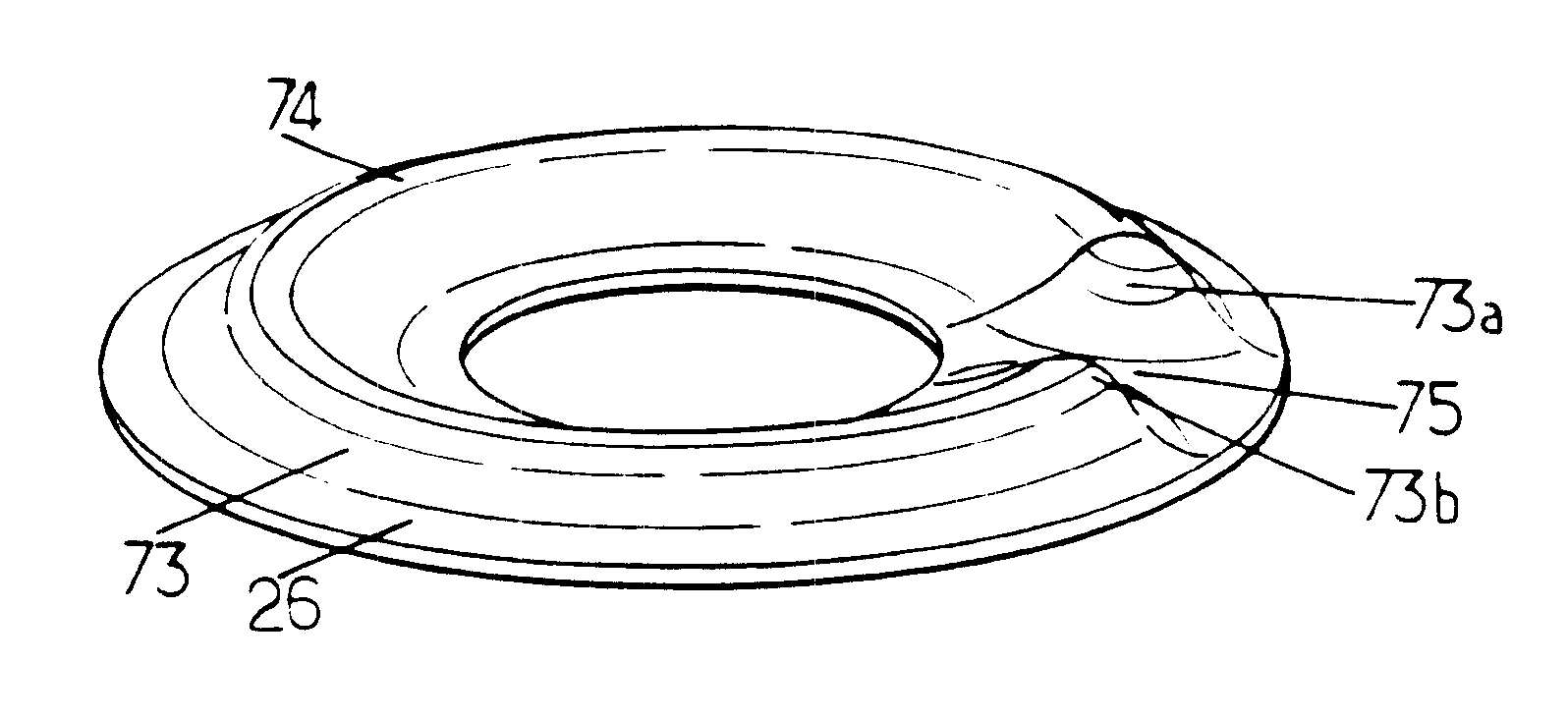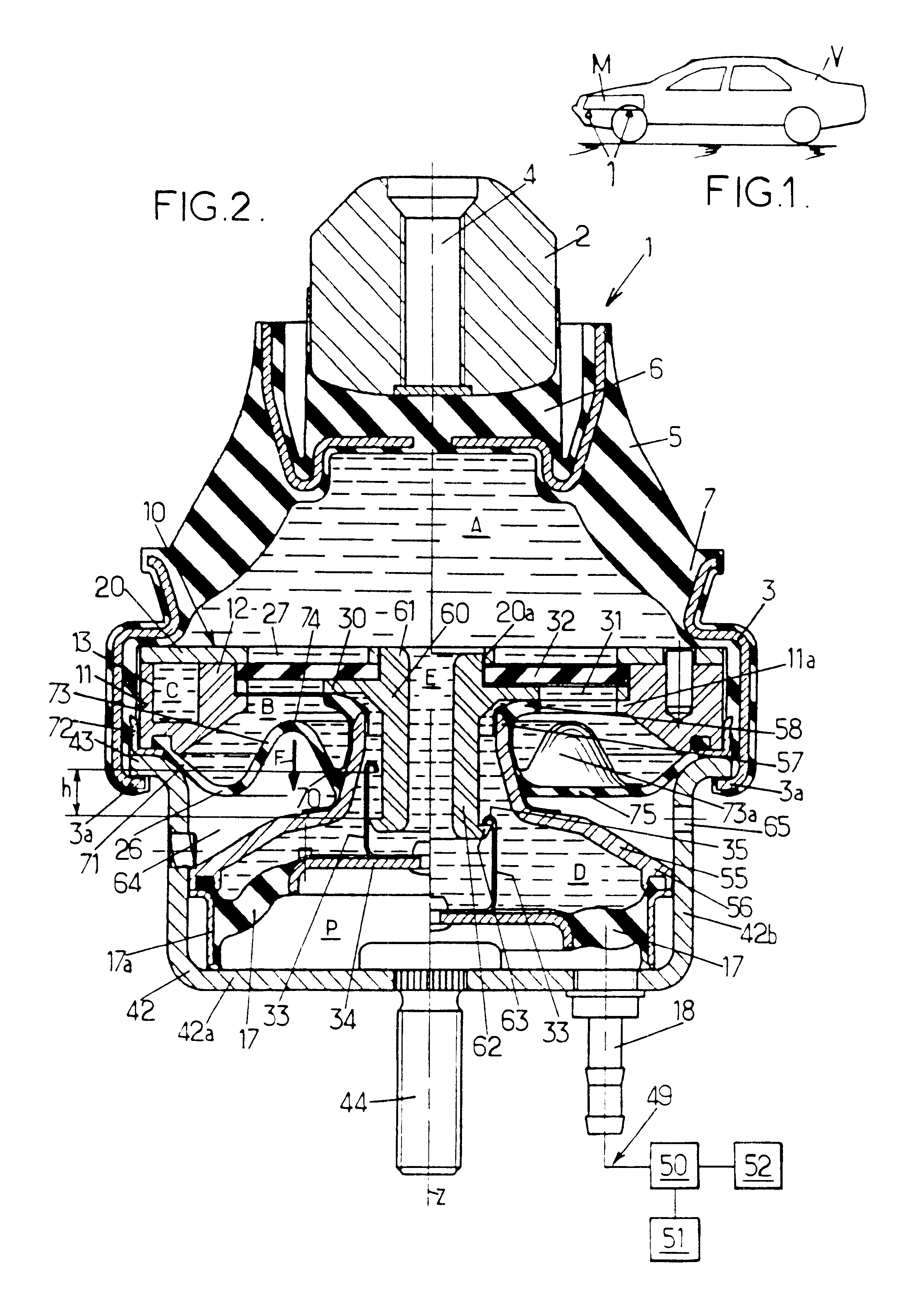Hydraulic antivibration support
a technology of antivibration support and hydraulic technology, applied in the direction of vibration dampers, machine supports, machine frames, etc., can solve the problems of affecting the operation of antivibration support, presenting a relatively high level of bellows stiffness, and impede the free deformation of the compensation chamber, so as to reduce the stiffness of the bellows, improve the performance of the antivibration support, and increase the volume of the working chamber
- Summary
- Abstract
- Description
- Claims
- Application Information
AI Technical Summary
Benefits of technology
Problems solved by technology
Method used
Image
Examples
first embodiment
In the invention, shown in FIG. 2, the hydraulic antivibration support 1 comprises first and second strength members 2, 3 for fixing respectively to the engine unit M and to the bodywork V.
In the example described, the first strength member 2 is in the form of a stud centered on a vertical axis Z and pierced by a tapped hole 4 enabling it to be fixed to the engine unit M, while the second strength member 3 is formed by a steel ring, likewise centered on the axis Z.
These two strength members 2 and 3 are interconnected by a relatively thick elastomer body 5 which presents sufficient compression strength to be able to take up the static forces due to the weight of the engine unit. The elastomer body 5 has a bell-shaped side wall which extends between a top 6 secured to the stud 2 and an angular base 7 which is secured to the ring 3.
The second strength member 3 surrounds a rigid partition 10 which co-operates with the elastomer body 5 to define a working chamber A that is filled with li...
second embodiment
In the invention, as shown in FIGS. 6 to 8, the ridge 74 of the annular fold 73 in the bellows is provided as before with a depression 76 whose concave side faces towards the compensation chamber B, but in this case the depression extends solely over a fraction of the height of the fold.
In this second embodiment, as in the first embodiment as described above, the depression formed in the fold 73 of the bellows is obtained when molding the bellows 26.
In a third embodiment, shown in FIG. 9, the depression 76, e.g. identical or similar in shape to the depression 76 of the second embodiment as described above, can be obtained by means of a rigid finger 77 or some other presser element, e.g. belonging to the body 11 of the partition 10 and projecting axially downwards in the compensation chamber B so as to press locally on the ridge 74 of the fold 73.
Under such circumstances, the bellows 26 can be molded with an annular fold 73 that is circularly symmetrical about the axis Z, the local d...
fourth embodiment
Finally, as shown in FIG. 10, in the invention, the bellows 26 can be irregular in shape at the ridge 74 of its fold 73, forming a succession of depressions 78 each having a concave side open towards the compensation chamber B, and portions 79 projecting towards the compensation chamber B. This irregular shape can be obtained in particular during molding of the bellows 26.
PUM
 Login to View More
Login to View More Abstract
Description
Claims
Application Information
 Login to View More
Login to View More - R&D
- Intellectual Property
- Life Sciences
- Materials
- Tech Scout
- Unparalleled Data Quality
- Higher Quality Content
- 60% Fewer Hallucinations
Browse by: Latest US Patents, China's latest patents, Technical Efficacy Thesaurus, Application Domain, Technology Topic, Popular Technical Reports.
© 2025 PatSnap. All rights reserved.Legal|Privacy policy|Modern Slavery Act Transparency Statement|Sitemap|About US| Contact US: help@patsnap.com



